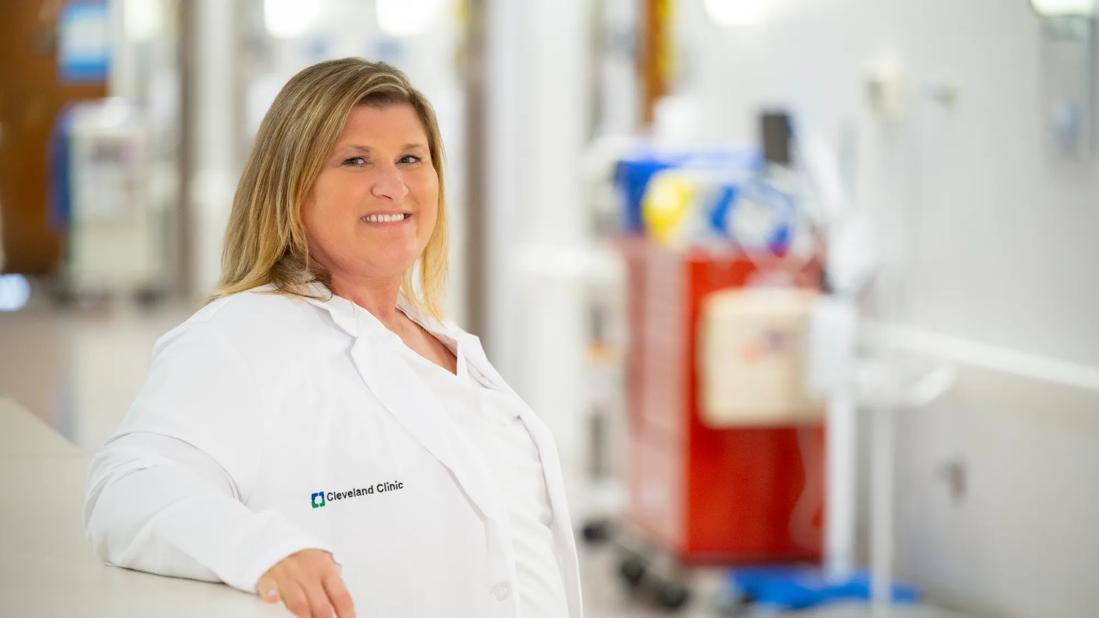Nurses interview post-operative orthopaedic patients

Daily interdisciplinary rounding on patients who are hospitalized is an important part of providing high-quality care. But for some clinicians, such as orthopaedic surgeons at Cleveland Clinic who operate at multiple hospitals in the healthcare system, in-person rounding can be challenging. What if patients could continue to connect with an interdisciplinary team that includes the primary provider? Tonya Moyse, MSN, RN, Nurse Manager on the orthopaedic unit at Cleveland Clinic’s main campus, conducted research on the use of virtual rounds.
Advertisement
Cleveland Clinic is a non-profit academic medical center. Advertising on our site helps support our mission. We do not endorse non-Cleveland Clinic products or services. Policy
“In today’s world, virtual technologies allow us to eliminate geographic barriers and enable surgeons to connect and communicate with their patients, as well as collaborate with the care team while off-site,” says Moyse. “I was particularly interested in how our patients would perceive virtual rounding.”
Working alongside a team of nurses and two orthopaedic surgeons, Moyse spearheaded a qualitative, phenomenological study to understand patients’ perceptions of their virtual rounding experiences. The team conducted interviews with 27 adult patients who had participated in virtual rounds during hospitalization on the orthopaedic surgery unit. Interviews were conducted at the patient’s bedside on the day of discharge and were digitally recorded. Data were analyzed using inductive, qualitative content analyses and constant comparative methods. The researchers then came together as a group to listen to the recorded interviews and discuss the themes they had identified.
During the daily virtual rounds, nurses and advanced practice providers (APPs) brought tablets attached to wheeled stands into patient rooms, then the surgeon connected remotely. Typically, virtual rounds lasted for approximately five minutes per patient. Since surgeons did not always have access to the patient’s electronic medical record, the APP took on the role of providing real-time updates. Communication using the tablets was comfortable for most patients since many patients and families used tablets at home. The RN or APP positioned the camera on the tablet to allow the surgeon to assess surgical sites and the patient’s general range of motion.
Several themes emerged from the data analysis. “Orthopaedic virtual rounds provided a positive experience for most patients, but not all,” says Moyse. “Some patients did not feel prepared for the virtual rounding experience. However, patients understood the need for using technology to enhance their communication with their surgeon and felt that virtual rounds were convenient and the format allowed time to ask the physician questions about their surgery and recovery process.”
Moyse says the feedback received from patients will be used to enhance virtual technology and to educate the care team on their approach so that patients are better prepared for what to expect during virtual rounds. “When in-person rounds are not possible, virtual rounds are certainly a viable alternative to enable our physicians to connect with their patients and the caregiver team on the unit,” she says.
Advertisement
Advertisement

An unexpected health scare provides a potent reminder of what patients need most from their caregivers

Cleveland Clinic Abu Dhabi initiative reduces ICU admissions and strengthens caregiver collaboration

Veteran nurse blends compassion, cutting-edge transplant training and military tradition to elevate patient care

Embrace coaching and other tips to be a stronger leader

Compassion, communication and critical thinking are key

Study illuminates value of shared decision-making

How hospitals can weave ethics into daily nursing practice to strengthen patient-centered care

Mobility carts provide exercises and tools